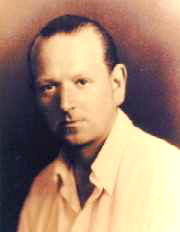Dr. Edward Bach and His Bach Flower Remedies
Flower essences in their preparation are very similar to homeopathic sun remedies whereby the finest specifica of the plant or flower is transferred into water by exposure to sunlight. (to learn more about homeopathic sun remedies click here.)
In his writings Dr. Edward Bach references Hahnemann and Paracelsus and is in full agreement with them. He is in good company indeed.
The concept that the catalyst for an ailment is due to a state of emotional imbalance that has its seat in the soul is a major qualitative leap in healing. Although Bach‘s mention of this is nothing new to natural healing, his idea that the problem was not of physical origin and the remedies needed to address it needed to be of a different kind was innovative. When it is understood for what it actually is, this state of dis-ease is the same as the Christian concept of “sin” only without the connotation of religious guilt that is often and erroneously associated with it. Everyone carries these imbalances to some degree and therefore everyone is subject to ailments at a time of vulnerability or by subjecting themselves to situations that brought out a particular emotional state.
Dr. Edward Bach studied medicine at the University College Hospital, London, and was a House Surgeon while there. He worked in general practice, having a set of consulting rooms in Harley Street, and as a bacteriologist and later a pathologist he worked on vaccines and a set of homeopathic nosodes still known as the seven Bach nosodes.
Despite the success of his work with orthodox medicine, Bach like others who had entered that field, felt dissatisfied with the way doctors were expected to concentrate on diseases and ignore the people who were suffering them. He was inspired by his work with homeopathy but wanted to find remedies that would be purer and less reliant on the products of disease. So in 1930 he gave up his lucrative Harley Street practice and left London, determined to devote the rest of his life to the new system of medicine that he was sure could be found in nature.
Just as he had abandoned his old home, office and work, so now he abandoned the methods he had used up until then. This is not to say that a scientific methodology was not being employed in his research. Cold blooded objectivity if of the utmost importance at arriving at conclusions based on sound reason. Instead Edward Bach chose to rely on his natural instincts and gifts as a healer, and use his intuition to guide him. One by one he found the remedies he wanted, each aimed at a particular mental state or emotion. His life followed a seasonal pattern: the spring and summer spent looking for and preparing the remedies, the winter spent giving help and advice to all who came looking for them. He found that when he treated the personalities and feelings of his patients their unhappiness and physical distress would be alleviated as the natural healing potential in their bodies was unblocked and allowed to work once more.
In 1934 Dr. Bach moved to Mount Vernon in Oxfordshire. It was in the lanes and fields round about that he found the remaining 19 remedies that he needed to complete the series. He would suffer the emotional state that he needed to cure and then try various plants and flowers until he found the one single plant that could help him. In this way, through great personal suffering and sacrifice, he completed his life’s work.
Dr. Bach passed away peacefully on the evening of November 27th, 1936. He was only 50 years old, but he had left behind him several lifetime’s experience and effort, and a system of medicine that is now used all over the world.




